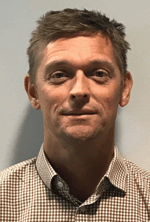Risk-based corrosion assessment and refurbishment of marine structures
Stephan Dickinson A , Kerryn Wilson A , Ali Sarandily A C , René van der Werf B , Steve Sheen B and Peter Cawley BA AECOM, Level 6 GPO, Perth, WA 6000, Australia.
B Woodside Energy Ltd, Woodside Plaza, 240 St George Terrace, Perth, WA 6000, Australia.
C Corresponding author. Email: Ali.Sarandily@aecom.com
The APPEA Journal 58(1) 60-71 https://doi.org/10.1071/AJ17102
Submitted: 28 November 2017 Accepted: 30 January 2018 Published: 28 May 2018
Abstract
This paper outlines a holistic, risk-based approach to managing the service life of existing liquefied natural gas (LNG) and liquefied petroleum gas (LPG) marine structures in Western Australia. The structures have been in service since 1989 (LNG) and 1995 (LPG) and are nearing the end of their original design life. The objective of this approach is to extend the design life for an additional 20 years to 2040. The risk-based assessment (RBA) process is composed of three main steps undertaken in sequence to identify and quantify refurbishment requirements for the timeframe. A two-campaign approach was considered, the first being in 2019 (Phase 1) and the second in 2030 (Phase 2). The RBA process combines innovative and conventional inspection techniques with a detailed desktop structural assessment of the remaining life of the structures’ individual components to enable an informed decision to be made on the refurbishment requirements for each campaign.
The results of the stepped RBA process demonstrate the effectiveness of the approach to define and manage a refurbishment program that achieves the required extended service life of the structures to 2040.
The RBA process enabled the first campaign’s scope to be minimised through detailed analysis and calculation of residual design life of each critical member, deferring most of the refurbishment scope to the second campaign in 2030.
The study has recommended implementation of a corrosion rate trial to verify the assumed corrosion rates for the jetty structures. Environmental monitoring stations and test coupons installed on the jetty for a five-year period will confirm the actual deterioration rates specific to the jetty structures. Confirmation of actual deterioration rates may reduce uncertainty in the values over those currently assumed in the study and positively affect the identified Phase 2 refurbishment scope.
Keywords: deterioration rates, durability of marine structures, marine environment, refurbishment, remaining life assessment, risk-based assessment, uniform corrosion.

Mr. Stephan Dickinson is a Chartered Civil Engineer with over 20 years’ experience in brownfields works including planning, inspection and detailed testing, condition assessments and remaining life analysis, which is the increasing focus of clients in today’s market. Stephan has been working closely with Woodside over the last 5 years on the KLE program to inspect, review and assess the condition of the LNG and LPG jetty structures. |

Dr Kerryn Wilson is a materials, corrosion and durability specialist with over 18 years’ experience in industry, academia and consultancy in Australia and New Zealand. Kerryn has been involved in the condition and durability assessment of over 500 maritime, transport, mining, oil and gas, water and building structures and has led numerous durability investigation projects. Kerryn has been working closely with Woodside over the last 5 years on the KLE program to inspect, review and assess the condition of the LNG and LPG jetty structures. |

Dr Ali Sarandily is a Chartered Engineer and has over 30 years’ experience in academia and maritime engineering projects, particularly in marine structures in Australia, Middle East, Hong Kong, Thailand and the UK. Ali has been working closely with Woodside Energy over the last 8 years first on Browse LNG Development and now on the KLE program. |

Mr. Rene van der Werf is a Mechanical Engineer and Certified Project Management Associate (IPMA-D) with over 18 years’ international experience in the design and implementation of water management and infrastructure projects. Rene has delivered a wide range of greenfield and brownfield projects in the oil and gas industry since he moved to Australia in 2008. Rene has been Woodside’s Senior Project Engineer for the KLE project, which includes the life extension of the LNG and LPG jetty structures. |

Mr. Steven Sheen is a Structural Engineer with over 20 years of experience in the design, review and management of infrastructure in resource industry. Steven has been Woodside’s Technical Integrity Custodian for the KLE project, which includes the life extension of the LNG and LPG jetty structures. |

Peter Cawley is an Engineer and has more than 20 years’ experience executing projects in operating oil and gas facilities. Peter gained international project delivery experience in Canada and Indonesia where he managed teams of people delivering multiple projects in challenging environments. Since re-joining Woodside in 2011, Peter has delivered several projects including successful refurbishment of the trunkline onshore terminal at KGP and refurbishment of the LNG and LPG jetties at the KGP. |
References
Escalante, E., Iverson, W. P., Gerhold, W. F., Sanderson, B. T., and Alumbaugh, R. L. (1977). ‘Corrosion and Protection of Steel Piles in a Natural Seawater Environment.’ (U.S. Department of Commerce: Washington D.C).Humble, H. A. (1949). The cathodic protection of steel piling in seawater. Corrosion 5, 292–300.
ISO 9224. (2012). Corrosion of metals and alloys – Corrosivity of atmospheres – Guiding values for the corrosivity categories, International Organization for Standardization (ISO), Geneva, Switzerland.
Jeffrey, R. J., and Melchers, R. E. (2010). Variability of Corrosion of Mild Steel Coupons in Tidal, Splash and Atmospheric Marine Environments. In ‘50th Annual ACA Conference: Corrosion and Prevention 2010, Adelaide, 14–17 November 2010’. (Australasian Corrosion Association: Blackburn, Vic.).
Kinson, K., Lloyd, C. P., and Eadie, G. R. (1983). Steel piling in Australia. Australian Geomechanics 6, 36–45.
Matsushima, I. (2011). Carbon Steel – Corrosion by Seawater. In ‘Uhlig’s Corrosion Handbook’. (Ed R.W. Revie) pp. 601–607. (John Wiley & Sons: Hoboken).
Nguyen, M. N., Leicester, R. H., and Wang, C.-H. (2008). ‘Atmospheric Corrosion of Fasteners in Timber Structures.’ (CSIRO: Melbourne.)
Panayotova, M., Garbatov, Y., and Guedes Soares, C. (2004). Factors Influencing Atmospheric Corrosion and Corrosion in Closed Spaces of Marine Steel Structures. In ‘The Seventh International Conference on Marine Science and Technology, Varna, 7 October 2004’.
Syed, S. (2006). Atmospheric Corrosion of Materials. Emirates Journal for Engineering Research 11, 1–24.
Wey, G. L. (1952). Corrosion Studies of Steel Piling in Sea Water in Boston Harbour. In ‘Proceedings of Third Conference on Coastal Engineering, Cambridge, 1952’. pp. 231–236. (Council on Wave Research: Cambridge, Massachusetts).


